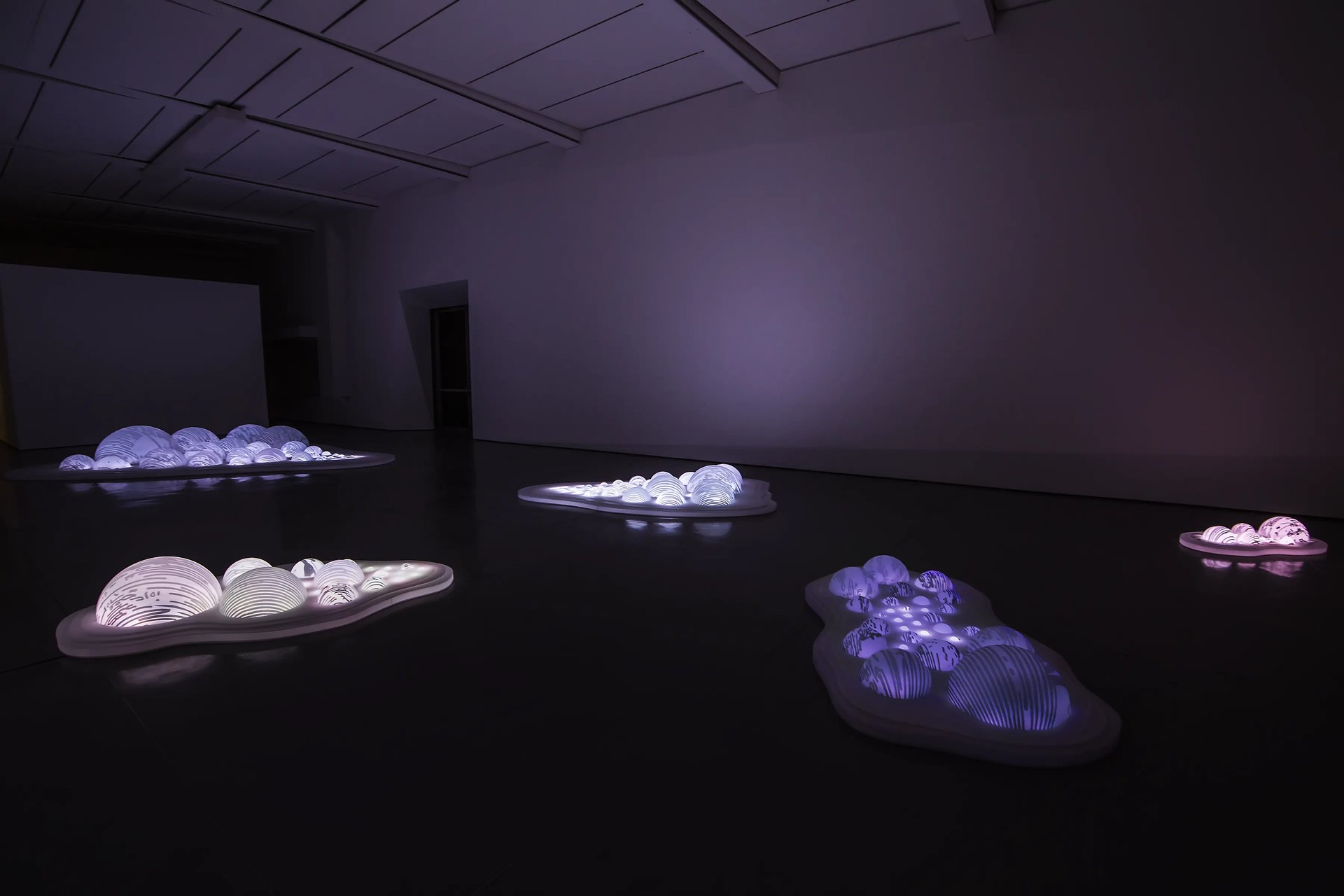REMOLINO
REMOLINO at the Jamaica Center for Arts and Learning in Jamaica, NY
Location: Jamaica Center for Arts and Learning | New York, NY, 2007
Dimensions: 35 ft x 30 ft
Growing up in Peru, I was fascinated by the diversity and dynamism of cities like New York, and have long envisioned a project that would explore and celebrate this “culture of differences.” Remolino was inspired by the neighborhood of Jamaica, in Queens—one of the first places I lived in New York, and the most ethnically diverse county in the United States. This neighborhood was veritably born of a confluence of cultures. Jamaica Avenue was an ancient trade route of the Algonquin Nation; the name itself is derived from the Jameco tribe. Settled by the British in 1655, Jamaica continues to attract those seeking a better life through increased economic opportunity, and today its streets are crowded with individuals of an indescribable diversity. It’s citizen’s hail from countries as distant and disparate as Haiti, China, India, Colombia, Jamaica, the Philippines, the Dominican Republic, and Pakistan.
The concentration of many dissimilar cultures and lifestyles within a relatively small space gives birth to a culture of unique contrasts. Lacking any prevailing norm, the pressure to conform in this type of community is minimal, and what was once difference becomes a part of a shared, multi-cultural experience. The residents of Jamaica are constantly swept up in this dynamic medley of languages, customs, and cuisines. This wave of diversity overwhelms and absorbs, but without threatening the integrity of individual cultures or people.
After observing, photographing, and filming the inhabitants of Jamaica, I created a video to be projected on the façade of the North Fork Bank. The juxtaposition of faces with images of flowing water is suggestive of the movement within the community, the merging of people from all imaginable origins on the vibrant sidewalks of Jamaica Avenue. The fusing, transforming, and scattering of these same faces forces the viewer to interrogate the nature of individuality, and how a shared identity can be forged out of dissimilarity.
Description: Remolino is a site-specific public art project at 161-01 Jamaica Avenue, selected by the Jamaica Center for Arts and Learning. It is a part of the Jamaica Flux: Workspaces and Windows 2007 exhibition, a multi-disciplinary and co-curatorial project with the aim of encouraging artists to engage in a dialogue with the community, residences, and businesses of Jamaica through their creative activities. This project is part of the on going effort to revitalize the neighborhood, to provide amenities, and to enrich cultural programs for the public.
Jamaica Center for Arts and Learning is a non-profit organization that offers visual, performing and literary arts, arts education, and artists’ programs to encourage participation in the arts to contribute to the cultural enrichment of Queens and the Greater Metropolitan area.
To read more about the project, please click here.




